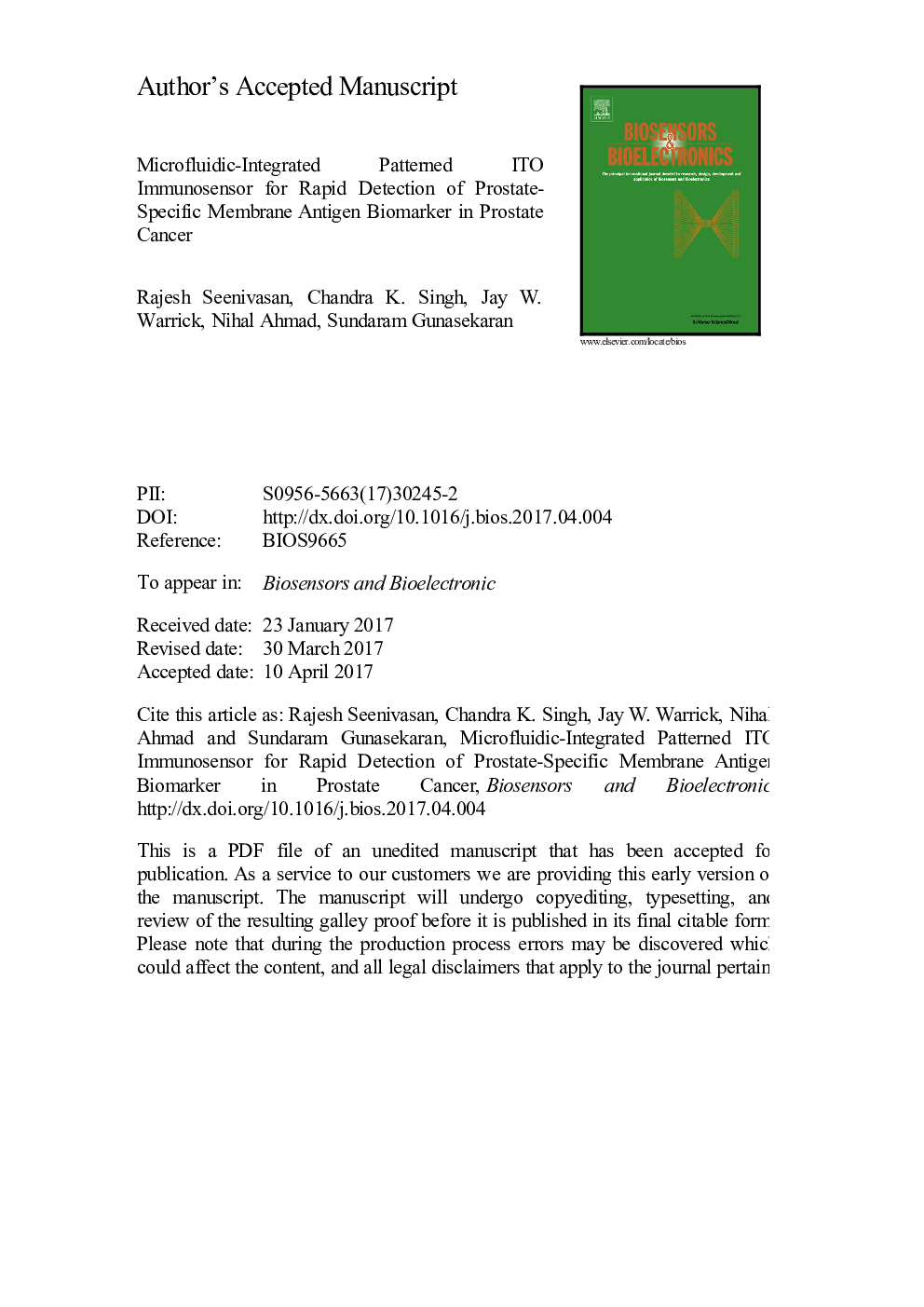| Article ID | Journal | Published Year | Pages | File Type |
|---|---|---|---|---|
| 5031506 | Biosensors and Bioelectronics | 2017 | 21 Pages |
Abstract
An optically transparent patterned indium tin oxide (ITO) three-electrode sensor integrated with a microfluidic channel was designed for label-free immunosensing of prostate-specific membrane antigen (PSMA), a prostate cancer (PCa) biomarker, expressed on prostate tissue and circulating tumor cells but also found in serum. The sensor relies on cysteamine capped gold nanoparticles (N-AuNPs) covalently linked with anti-PSMA antibody (Ab) for target specificity. A polydimethylsiloxane (PDMS) microfluidic channel is used to efficiently and reproducibly introduce sample containing soluble proteins/cells to the sensor. The PSMA is detected and quantified by measuring the change in differential pulse voltammetry signal of a redox probe ([Fe(CN)6]3-/[Fe(CN)6]4-) that is altered upon binding of PSMA with PSMA-Ab immobilized on N-AuNPs/ITO. Detection of PSMA expressing cells and soluble PSMA was tested. The limit of detection (LOD) of the sensor for PSMA-based PCa cells is 6/40 µL (i.e., 150 cells/mL) (n=3) with a linear range of 15-400 cells/40 µL (i.e., 375-10,000 cells/mL), and for the soluble PSMA is 0.499 ng/40 µL (i.e., 12.5 ng/mL) (n=3) with the linear range of 0.75-250 ng/40 µL (i.e., 19-6250 ng/mL), both with an incubation time of 10 min. The results indicate that the sensor has a suitable sensitivity and dynamic range for routine detection of PCa circulating tumor cells and can be adapted to detect other biomarkers/cancer cells.
Related Topics
Physical Sciences and Engineering
Chemistry
Analytical Chemistry
Authors
Rajesh Seenivasan, Chandra K. Singh, Jay W. Warrick, Nihal Ahmad, Sundaram Gunasekaran,
